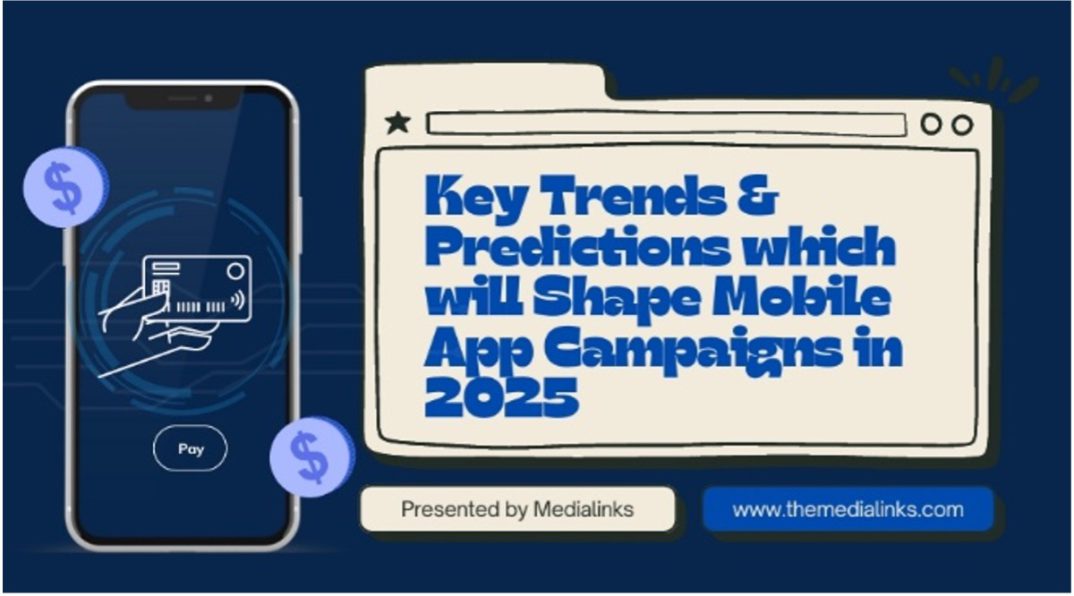Key trends and predictions that will shape mobile app campaigns next year.
As the mobile app industry evolves, marketers are moving away from traditional Cost-Per-Install (CPI) models and embracing more refined, action-based strategies. Cost-Per-Action (CPA) has emerged as a dominant model, focusing on meaningful user actions such as sign-ups, in-app purchases, or subscriptions.
This shift addresses a major limitation of CPI campaigns—while installs are critical, they don’t always translate into long-term user engagement or revenue. CPA models offer advertisers the advantage of paying only for specific, high-value actions performed by users, ensuring better return on investment (ROI).
In regions like the Middle East and North Africa (MENA), this change is particularly notable due to the growth in smartphone penetration and digital consumption habits. With the rise of mobile apps in the region, particularly in sectors such as e-commerce, fintech, and gaming, businesses have realised that driving post-install actions is crucial for sustained success.
According to the App Marketers Speak 2024 report by Appsflyer, which surveyed 1,000 growth marketing teams globally, driving long-term engagement and increasing lifetime value (LTV) ranks as the 6th most important challenge among the top 11 challenges faced by marketers.
Key trends shaping the future of CPA
1. Value-based bidding strategies
CPA campaigns are increasingly centered on value-based bidding strategies, where advertisers focus on driving actions that deliver long-term value to businesses. Instead of aiming for high install volumes, marketers now prioritise users who are likely to make in-app purchases, subscribe to premium services, or complete high-value transactions. This shift ensures that marketers not only drive app usage but also foster deeper engagement with high-intent users.
For instance, in the fintech sector, acquiring users who simply download an app is not enough; the real value comes from users who link their bank accounts or make transactions within the app. Similarly, e-commerce apps benefit most from users who frequently shop, not just those who install the app and abandon it after a few uses.
The trend is moving towards achieving a ‘Good” CPA and definition of a ‘good’ CPA according to Adjust is that when campaigns acquire users at a profitable price. This means when average revenue per user exceeds the marketing CPA, it is considered to be a ‘Good’ CPA.
In MENA, sectors such as ride-hailing, online delivery, and streaming services are also leveraging value-based bidding to maximise customer lifetime value. Marketers in these sectors use machine learning algorithms to identify users likely to engage in high-value actions, such as purchasing a subscription, frequently using services, or making regular in-app purchases.
2. The role of predictive analytics and AI in CPA optimisation
The integration of AI-powered algorithms and predictive modeling is revolutionising CPA strategies across industries. Artificial intelligence allows advertisers to predict user behavior by analyzing large data sets in real time. By leveraging predictive analytics, companies can identify high-intent users even before they complete a desired action. This results in more effective CPA campaigns, lower acquisition costs, and increased engagement rates.
This technology is also helping companies reduce ad wastage, as AI-powered systems optimise ad placements in real-time based on user behavior. Advertisers no longer need to rely on trial-and-error methods to find the right audience. In addition, AI-driven CPA strategies enable dynamic ad creatives, meaning ads can be personalised based on the user’s interests, location, or previous interactions with the app.
In a region like MENA, where mobile internet usage is rapidly growing, the use of AI in advertising has become critical for companies looking to remain competitive. Businesses are increasingly investing in AI capabilities to drive conversion rates, especially as app markets become saturated.
3. Hybrid monetisation models in the gaming sector
The gaming sector, particularly in regions like MENA, has become a leader in adopting hybrid monetisation models that blend in-app purchases with advertising-based revenue. Developers of hyper-casual and mid-core games are increasingly using CPA models to optimise for specific user actions, such as watching rewarded ads, completing in-game purchases, or participating in in-app events.
Hybrid monetisation models allow gaming companies to diversify their revenue streams, offering a more sustainable way to monetise users who may not be willing to spend money on in-game purchases alone. Rewarded video ads, for example, have proven highly effective, as they allow users to watch an ad in exchange for in-game currency or bonuses, thus increasing engagement without disrupting gameplay.
According to an article by Teacode, The advantages of the hybrid monetisation model allows developers to generate income from various sources, catering to different user preferences. This also helps them offer experience to their users which is more personalised.
4. Post-install optimisation and retargeting
A critical element of evolving CPA strategies is post-install optimisation. Once a user installs an app, the challenge becomes ensuring that they remain engaged. This is where retargeting and personalised messaging come into play. By re-engaging users who have installed an app but not yet taken a key action (e.g., making a purchase or signing up for a subscription), advertisers can maximise their return on CPA campaigns.
Leading apps in MENA are adopting technologies like deep linking to ensure a seamless user experience. For example, when a user receives a push notification about a discount, deep linking can direct them straight to the relevant page within the app, eliminating friction and increasing the likelihood of a successful action.
In MENA, companies are increasingly turning to personalised push notifications, which provide tailored messages based on user behavior and preferences. These personalised campaigns have shown to significantly improve retention rates. As per CleverTap, Mobile deep linking has a direct impact on improving the user experience. And we believe that improving user experience certainly impacts on increasing the LTV of the user.
5. Interactive ads
Interactive ad formats, such as playable ads and reward-based video ads, are rapidly gaining traction as effective tools for driving CPA campaigns. These ads allow users to engage with the app before committing to a download or purchase, leading to higher-quality user acquisition. Playable ads, for instance, let users experience a mini-version of a game or app, increasing the likelihood of post-install actions like completing in-app purchases or subscribing to premium content.
This trend is catching up in MENA and worldwide. Because as per a report by StackAdapt, interactive ads save on ad real estate, and let images do the talking. This really helps especially for smaller ad sizes which are quite common across desktop and mobile channels.
6. OTT and CTV as user acquisition platforms
Connected TV (CTV) and Over-the-Top (OTT) platforms are emerging as new channels for CPA-driven campaigns, offering a unique way for advertisers to reach audiences on large screens. Platforms like Shahid and StarzPlay have seen rapid growth in MENA, opening up opportunities for advertisers to target users with precision and drive specific actions, such as app installs, account sign-ups, or subscriptions.
These platforms offer advanced targeting options based on user demographics, viewing habits, and content preferences, making them ideal for CPA campaigns. In 2024, the adoption of CPA-focused campaigns on OTT and CTV platforms in MENA grew by 28 per cent, as more advertisers realised the potential of these channels to deliver higher-value users who are likely to convert after viewing an ad.
7. Deeper integration of AI and predictive analytics
By 2025, AI and predictive analytics will be integral to CPA optimisation, allowing advertisers to target high-value users with even greater precision. Real-time data will enable marketers to adjust their campaigns dynamically based on user behavior, ensuring that ads are shown to users most likely to engage and convert.
In sectors like fintech, gaming, and e-commerce, where cost-per-acquisition remains high, AI-driven strategies will reduce acquisition costs by identifying users with the highest potential lifetime value. As mobile app markets in MENA become more competitive, companies that leverage AI and predictive data will have a significant advantage in securing high-value users at a lower cost.
8. Greater focus on first-party data
With the rise of privacy regulations, first-party data will play a crucial role in CPA campaigns. By 2025, advertisers will increasingly rely on first-party data to target users effectively while complying with privacy laws such as GDPR and the California Consumer Privacy Act (CCPA). This will become even more relevant as third-party cookies continue to phase out.
In MENA, sectors like e-commerce and healthtech are expected to lead the way in building robust first-party data strategies, helping brands deliver personalised ads while maintaining user trust and regulatory compliance.
9. Expansion of CPA across new verticals
While CPA models have traditionally been most popular in gaming, e-commerce, and fintech, we will see their application expand to other verticals, such as healthcare, education, and entertainment apps. For instance, healthtech apps in MENA, focusing on telemedicine or digital health services, will likely leverage CPA to drive sign-ups or consultations, while edtech platforms will use CPA models to acquire users for online courses or premium learning content.
The road ahead for CPA in mobile marketing
At Medialinks, we’re experts in driving mobile app growth through a results-driven CPA model. The future of mobile app marketing is rapidly shifting towards Cost-Per-Action (CPA), where value-driven engagement and high-LTV users take precedence over sheer volume. From value-based bidding and AI-powered strategies to the rise of new ad formats, the CPA landscape is transforming both globally and in MENA.
Ready to take your app to the next level? Let’s connect! And if you want to stay ahead of the curve with the hottest mobile app trends in MENA for 2024, download our exclusive report here.
By Zeeshan Sajid Amin, Head of Growth at Medialinks.




